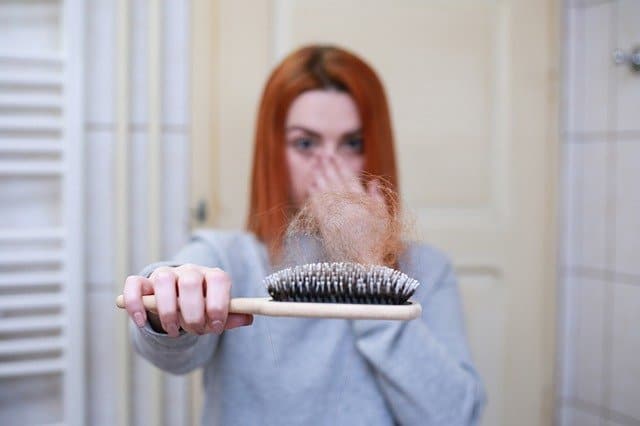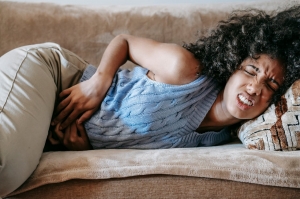Hair loss problem is one of the most important problems that both men and women face and causes them embarrassment and tension. There are different causes of hair loss problem; it may be due to the use of harmful chemicals on the hair or a lack of vitamins and nutrients in the body. What are the main causes behind the hair loss problem, and what are the essential treatments?
1. Hair loss problem
Is your hair falling more prominently than usual? Is it a seasonal fall or a hair loss problem? Finally, you wonder if this is normal or if you really lose your hair.The hair left on your pillow or in the sink seems to multiply every day, and you wonder if it is normal or if you are really losing your hair.
2. What is "normal" hair loss?
Losing some hair every day is a normal physiological phenomenon. Among the thousands of hairs on our heads, more than one in ten daily dislodge end-of-life hair to grow in its place. The phenomenon becomes pathological when the falling hair is badly replaced, by fewer and increasingly weak regrowth, or is no longer replaced at all. In dermatology, we speak of alopecia.
3. The causes of hair loss problem
- General causes:
3.1 Genetic causes
In most cases, hair loss problem is inherited, that is, it is passed from one parent to the person, and this is also called the "hereditary alopecia in women" (FPHL) and "hereditary alopecia in men" (MPHL).
3.2 An imbalance in the thyroid gland
In some cases, the hair loss problem results from changes in the secretion of hormones in the body, which is affected by the thyroid gland. So any imbalance in the thyroid gland makes it affect the rate of hormone secretion increase or decrease, and this, in return, harms the hair and causes its fall.
3.3 Anemia due to iron deficiency
Although iron deficiency appears to be an uncommon cause of hair loss problem, it can, in fact, play a role in this problem, especially for women.The symptoms of iron deficiency are numerous, including severe fatigue, weakness, light skin, difficulty concentrating, headache, cold hands, and feet, as well as hair loss.Iron deficiency is detected through a blood test. Treatment includes eating iron-rich foods such as meat and liver, and your doctor may also prescribe iron supplements.
3.4 Stress and anxiety
This includes physical stress that accompanies the patient after surgery, multiple diseases, severe fever, or high body temperature.
3.5 Use of bad chemical preparations
Many women and men who use chemical preparations for hair care. Among these products:
- Hair dyes
- Colors and color-lightening materials
- Hair straightening materials
If these products are used correctly according to the instructions, the possibility of damaging the hair is very little.However, if these products are used often, the hair may be weak and tend to split.If the use of these preparations leads to weak and brittle hair, it is preferable to stop using them until the hair is regenerated and recovered, and the damaged hairs disappear.
3.6 Exposure to an emotional or physical shock
Emotional or physical trauma may lead to significant hair loss, examples of which include the death of a family member, severe weight loss, or high fever.
- Natural causes:
3.7 Pregnancy and childbirth
The density of women’s hair increases during pregnancy. As a result of the high percentage of hormones that maintain hair in their bodies, however, after birth, these hormones return to their normal level, and hair falls quickly.
3.8 Alopecia areata
Alopecia areata happens when the immune system attacks the hair follicles, causing sudden hair loss, causing circular spots, baldness, and smoothness on the skin.
3.9 Ringworm disease
There are many infections that affect the scalp, including ringworm, which affects the hair and scalp, and consequently, flaky and hair-free spots appear in the affected area. Still, when treating these infections, the hair returns to growth again.Related: The health benefits of drinking hot water
4. Prevention of hair loss problem
Can we really prevent hair loss problem?It is difficult to prevent hair loss, especially if it is not hereditary. However, in the event of abnormal hair loss, or if a parent is prone to alopecia, a few daily actions can slow hair loss. To prevent hair loss, it is advisable to:
- Limit hair dyes, gels, and hairsprays, dry shampoos;
- Use a mild shampoo;
- Avoid tight hairstyles, such as braids, buns, or ponytails.
- Massage the scalp;
- Avoid compulsive twisting, rubbing, or stretching your hair.
- Avoid harsh treatments such as hot rollers, curling irons, hot oil treatments, and individual or chemical hair curls.
- Eat a rich diet in iron, copper, silicon, fatty acids, zinc, and vitamin B.
- Avoid medications and supplements that can cause hair loss.
- Protect your hair from sunlight and other UV sources.
- Quit Smoking. Some studies show a relationship between smoking and baldness in men.
- If you are being treated with chemotherapy, ask your doctor about a cooling cap. This hood can reduce the risk of hair loss during chemotherapy.
5. Treatment of hair loss problem
Hair loss treatments vary by cause. If it is linked to childbirth, fatigue, or the change of season, zinc and vitamin B supplementation is a solution. For alopecia areata, corticosteroid therapy is generally prescribed. For the most severe or advanced cases, hair transplantation is possible.
5.1 Surgery to restore hair
Dermatologists and surgeons perform several types of surgeries to restore the hair and the places from which they fall, in addition to giving the hair a natural look, as possible.The people who are most likely to undergo such surgeries are those whose baldness is most noticeable, have very light hair, and whose hair falls out due to scalp injury or burns.The extent and shape of baldness determine the type of operation to restore hair. The dermatologist can recommend one of the below-detailed types of surgeries in order to get the best possible result.
5.2 Hair Transplantation
Hair transplantation depends on the "prevailing donation," that is, taking hair from a healthy location and transplanting it, in order to grow again in the place affected by baldness. Hair transplantation requires the following:- Removal (Streaks) of the skin of the scalp: that contains the hair from the back and sides of the scalp (these places are called "donation areas" since they contain hair that continues to grow for life).- Repair and restoration of the "donation area": is a process that usually results in the appearance of a small scar covered by the surrounding hair.- Cut scales from the scalp's skin: which contains the hair, from the donation area, and divide them into groups of implants to transplant them into bald spots prepared for that.
- Technology Branding Tactics
- The endocrine system composition
- Osteoporosis disease; causes, and treatments
Originally published on Live Positively.






